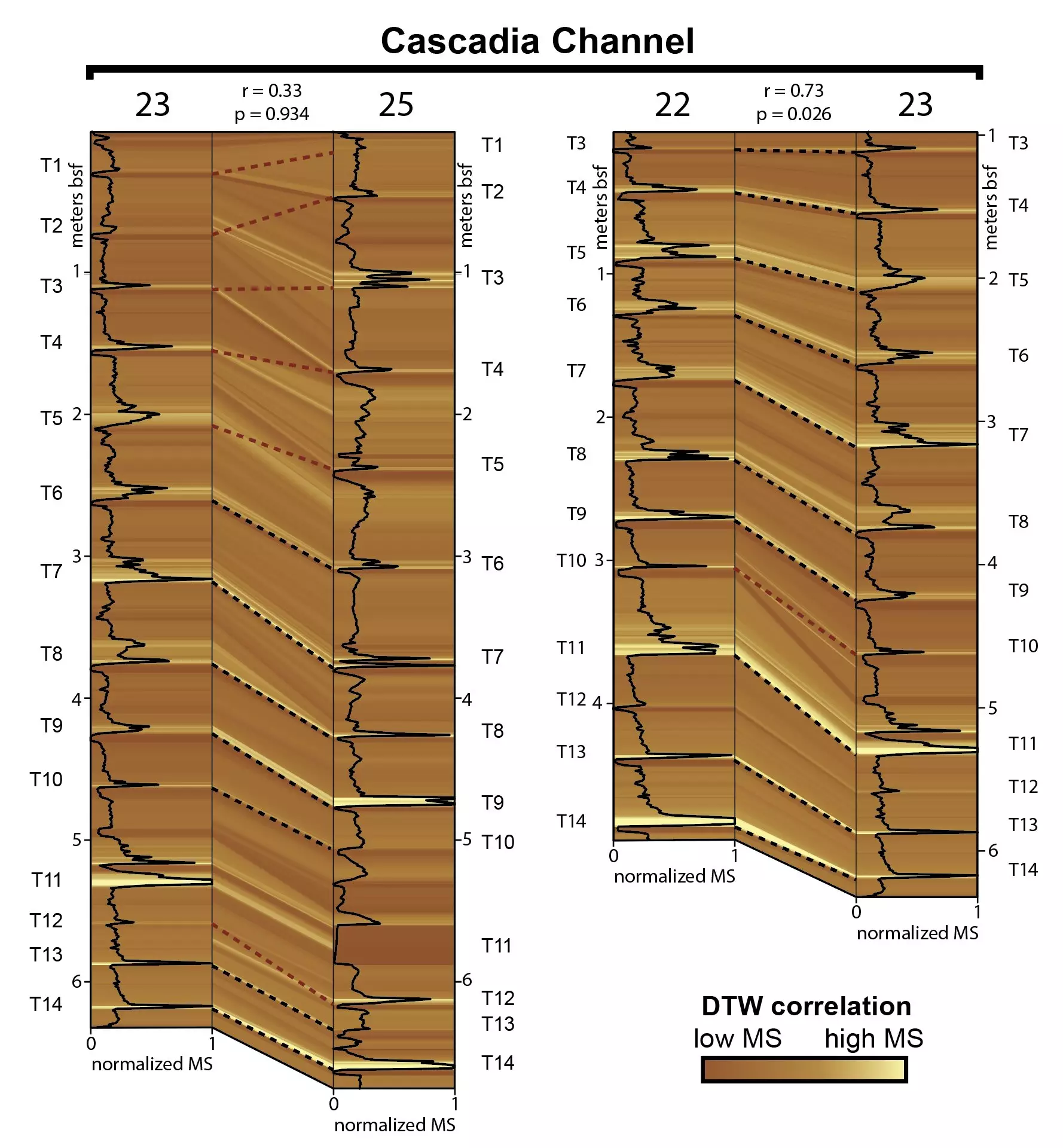The Cascadia subduction zone, located off the Pacific Northwest coast of North America, is fraught with a history of cataclysmic earthquakes that can reshape landscapes and affect millions of lives. Its most notable event in recent history occurred in the year 1700, when a devastating earthquake unleashed ferocious tsunamis that extended as far as Japan. Today, as urban centers flourished above this tectonic fault line, questions arise regarding the timing and frequency of future earthquakes. Understanding these phenomena has become critical, especially when many areas are densely populated and vulnerable to seismic events.
Recent research aimed at discerning the historical frequency of earthquakes in this region has prompted a reevaluation of long-standing assumptions. An updated study conducted by a team at The University of Texas at Austin has raised significant doubts about the reliability of existing geological records that rely heavily on turbidite deposits, which have long been assumed to correlate consistently with seismic activity.
Turbidites are sedimentary deposits formed from underwater landslides, arising from turbulent flows that stir sediments off the seabed and lay them down in a graded manner. Traditionally, researchers have linked these layers to past earthquakes, believing that specific characteristics denote seismic activity. However, the novelty of the latest study lies not merely in its analysis of turbidites, but in the implementation of an advanced algorithm known as “dynamic time warping.”
This algorithm, prevalent in various technological fields such as voice recognition, has been adapted for geological use to offer a more rigorous method for correlating turbidite samples. The research team scrutinized layers that dated back approximately 12,000 years, aiming to establish whether the presence of similar turbidite layers across different geologic cores indeed indicated a connection to seismic activity. The findings were startling—most correlations were no better than random chance, undermining previous interpretations that took such links for granted.
Researchers, including co-authors Joan Gomberg and Jacob Covault, underscore the importance of these results. They recommend that others citing earthquake intervals linked to the Cascadia subduction zone consider the uncertainties highlighted by the study. They argue for enhanced methodologies to refine existing timelines, as our understanding of seismic risk directly affects public safety and preparedness.
While the current estimate suggests that significant earthquakes may occur every 500 years in Cascadia, the new findings serve as a clarion call for further investigation into turbidite layers, particularly how they interrelate and indicate earthquake occurrences. The study implies a pressing need for an expanded database of geological evidence, which can offer a clearer picture of both historical and potential future seismic events.
The correlation of turbidites is a complex task, as these sedimentary layers often reflect the impacts of various factors beyond earthquakes, such as storms or localized flooding. This inherent variability complicates the task of estimating a reliable chronology of seismic activity merely based on sedimentary evidence. Traditional methods frequently lack the precision needed to discern whether turbidites are indicative of the same geological event or merely coincidental layers formed by unrelated phenomena.
Despite the advanced algorithm’s promising results, it is vital to note that it represents just one aspect of a broad spectrum of tools available for geological interpretation. The researchers stress the necessity of integrating diverse datasets to validate findings more comprehensively. The realization that the connection between turbidite layers and historical earthquakes is uncertain implies a call for geological caution, highlighting the nuances of interpreting physical evidence in the earth sciences.
As researchers move forward, they must harness both traditional geological approaches and innovative computational techniques to refine how we understand and predict seismic behavior in active regions like the Cascadia subduction zone. The study inspires a renewed interest in using cutting-edge methods to challenge pre-existing models of seismic prediction and risk assessment while emphasizing the collaborative nature of modern science.
Ultimately, while the algorithmic findings provide a fresh perspective, the overarching message remains clear: the Cascadia subduction zone, while historically significant, represents an ongoing risk that society must take seriously. Rigorous scientific inquiry, coupled with robust public policy and education, will be crucial as we prepare for the inevitable earthquakes that characterize this dynamic geological landscape.

